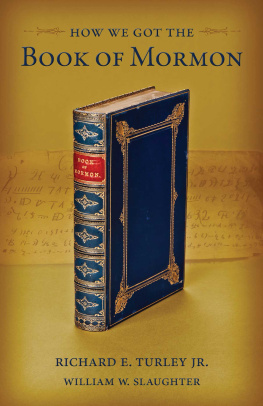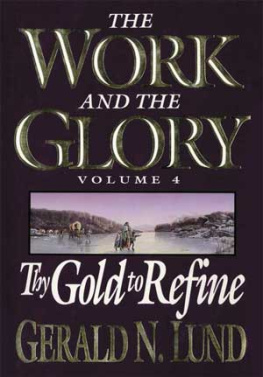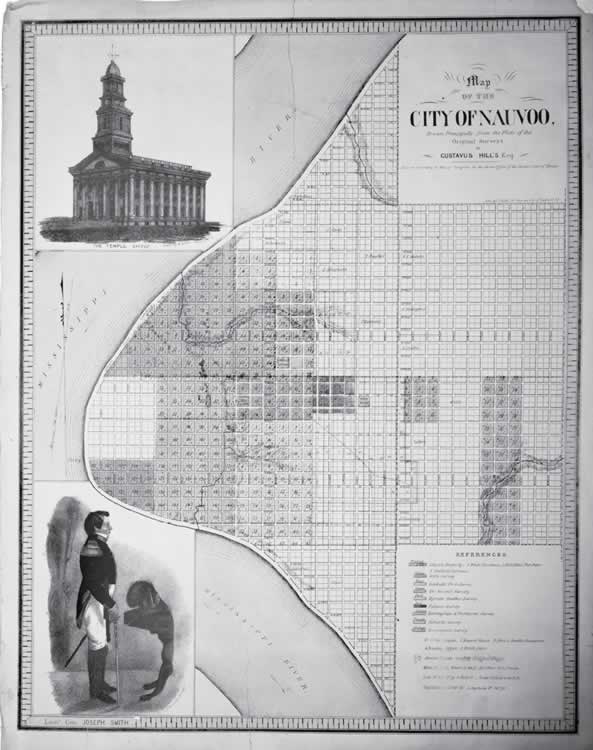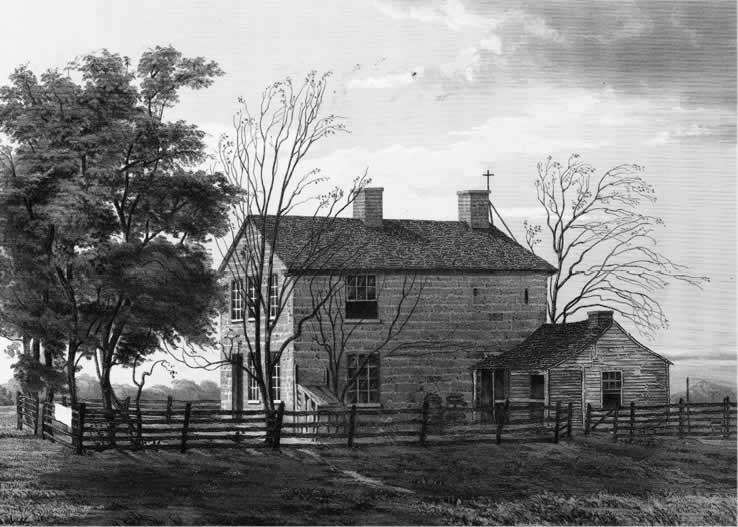To pioneers of all ages
Contents
Preface
Wagons West: Brigham Young and the First Pioneers is designed for young readers and others who enjoy a simple but dramatic presentation of historical events. It is divided into chapters of a comfortable length for bedtime reading.
The book closely follows historical sources. All quotations, including dialogue, come from original documents, though we have corrected and updated spelling, capitalization, and punctuation to make the stories easier for young readers to understand. We hope readers of this book might later become interested in more serious history works that deal in greater detail with matters too complicated for this volume.
This book owes a great debt to previous writers, especially the pioneers themselves. We have consciously chosen not to include source notes for fear of discouraging young readers, but we have included a selected bibliography of recommended readings at the end of the volume.
We hope readers will enjoy these stories for many generations to come.
Chapter One
Nauvoo the Beautiful
The Saints took pride in their beautiful city of Nauvoo, Illinois, nestled in a bend of the Mississippi River. They had built most of it themselves. So why, in 1845, were mobs demanding that they leave?
Joseph Smith had led a group of people there in 1839 after they were driven out of the state of Missouri. The land that became Nauvoo was mostly a disease-infested swamp then. But Joseph, their president and leader, saw its potential. It would take work, but with heavens blessing they could turn this land into a gathering place, a place of rest.
Map of the City of Nauvoo.
These people belonged to The Church of Jesus Christ of Latter-day Saints. They called themselves Saints, but others referred to them as Mormons. This name came from one of their volumes of scripture, the Book of Mormon, which they believed in along with the Bible.
The Saints drained the swampy land and cultivated it. They built new homes and stores and started to erect an imposing temple. They were in the process of setting up a university. They established the Nauvoo Legion, a peace-keeping force authorized by the Illinois state government. It was a stirring sight to see the Legion march through the streets to the music of a brass band.
Nauvoo became a thriving city. Its population soared to around 12,000, almost the same as Chicago, the largest city in Illinois. That worried some non-Mormons. They feared the Mormons wanted to take over the whole state. In fact, the whole country. Hadnt Joseph Smith announced that he planned to run for president of the United States?
Massacre of Saints at Hawns Mill, Missouri, 1838.
That wasnt all. The anti-Mormons said the Mormons were too close-knit and secretive. Some of them practiced plural marriage. They claimed God required them to do so. They had other strange beliefs. They were different. They had to be stopped. The critics goal became to get rid of the Mormons.
Joseph Smith inspecting the Nauvoo Legion.
On June 27, 1844, a swarm of violent men assassinated Joseph Smith and his brother Hyrum. They thought that would stop the Mormons. Elizabeth Ann Smith Whitney wrote later, The Gentiles, our opposers, thought they had destroyed our religion, overthrown our cause, and destroyed the influence of our people, and actually had accomplished all that was necessary to do away with Mormonism. But Gods work cannot be ignored; another prophet, Brigham Young, was raised up to succeed Joseph, and the work rolled on.
Carthage Jail, where Joseph and Hyrum Smith were martyred.
As time went on, mobs began attacking Latter-day Saint settlements outside Nauvoo. They burned houses and destroyed crops. In the fall of 1845 they set fire to two hundred buildings. Hundreds of people became homeless, and one man was severely beaten.
Sarah Louisa Decker reported, This is only one of the cruel things that was happening right along on the outskirts of town. Women and helpless children were carried from a sick bed and laid on the ground while their house and goods were burned. Wheat, haystacks and barns were burned and the cattle driven off.

Brigham Young in the mid-1800s.
Brigham Young became the Saints new leader after Joseph Smiths death. Brigham knew his people had to prepare for the worst. He wrote a letter, instructing them to sell their land and other properties. He told them to gather together money, wagons, oxen, cows, mules, and a few good horses adapted to journeying and scanty feed.
But where were they to go?
Brigham knew. Even before Joseph Smiths death, Church leaders discussed plans for moving the Saints. Joseph said they must find a place where we can build a city in a day, and have a government of our own, and get up into the mountains, where the devil cannot dig us out.
The eastern edge of the Great Basin, where Church leaders planned to move the Saints.
Brigham and the other Church leaders considered many different areas. After much prayer, they decided the Great Basin beyond the Rocky Mountains was the right place to go. They had read reports of fertile land and an abundance of flowing streams. There was also an unusual body of water called the Great Salt Lake. Surrounded by mountains, the Great Basin was a place where the Saints could build a new home and worship as they pleased. Best of all, it was far away from their enemies.
Brigham wanted to follow Josephs wishes. He urged the people to be of good cheer. He said they should wake up... to the present glorious situation in which the God of heaven has placed you. They would find a new home and build another beautiful city, where they could live and worship in peace.
But the place they talked of going was over a thousand miles from Nauvoo. How were they to get there?
Chapter Two
Driven Out
Brigham Young was a strong man. He was shorter than Joseph Smith, who stood over six feet tall, but like Joseph, he was athletic and energetic. Born in 1801, Brigham had very little formal schooling in his youth. However, he possessed a bright mind and an abundance of common sense. People liked and trusted him.
In 1844, Brigham was the president of the Quorum of the Twelve Apostles. After Joseph died, the Twelve were sustained to lead the Saints. Brigham was president of the quorum but not yet president of the Church. That would come later.
As the violence increased in Nauvoo, Brigham knew the Saints had no choice but to leave. They were being driven out. They had to go, and soon.
























